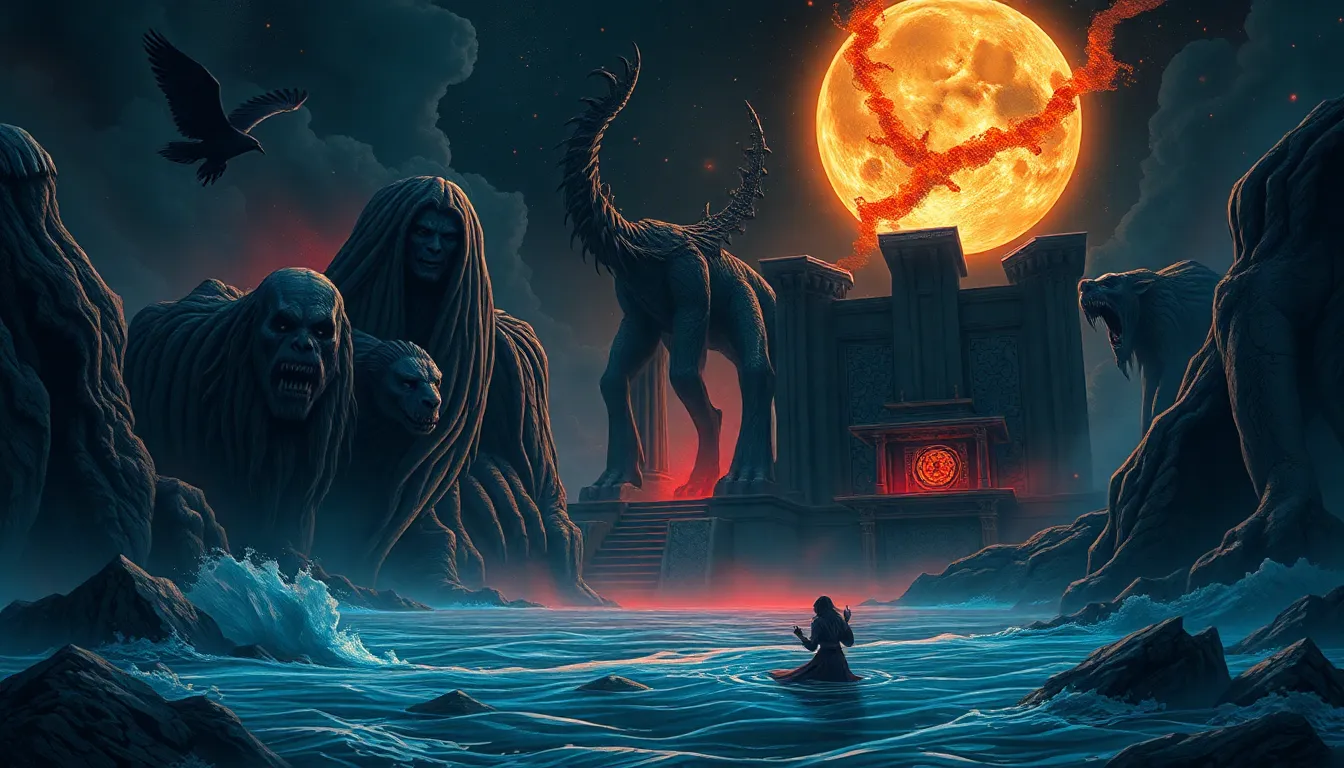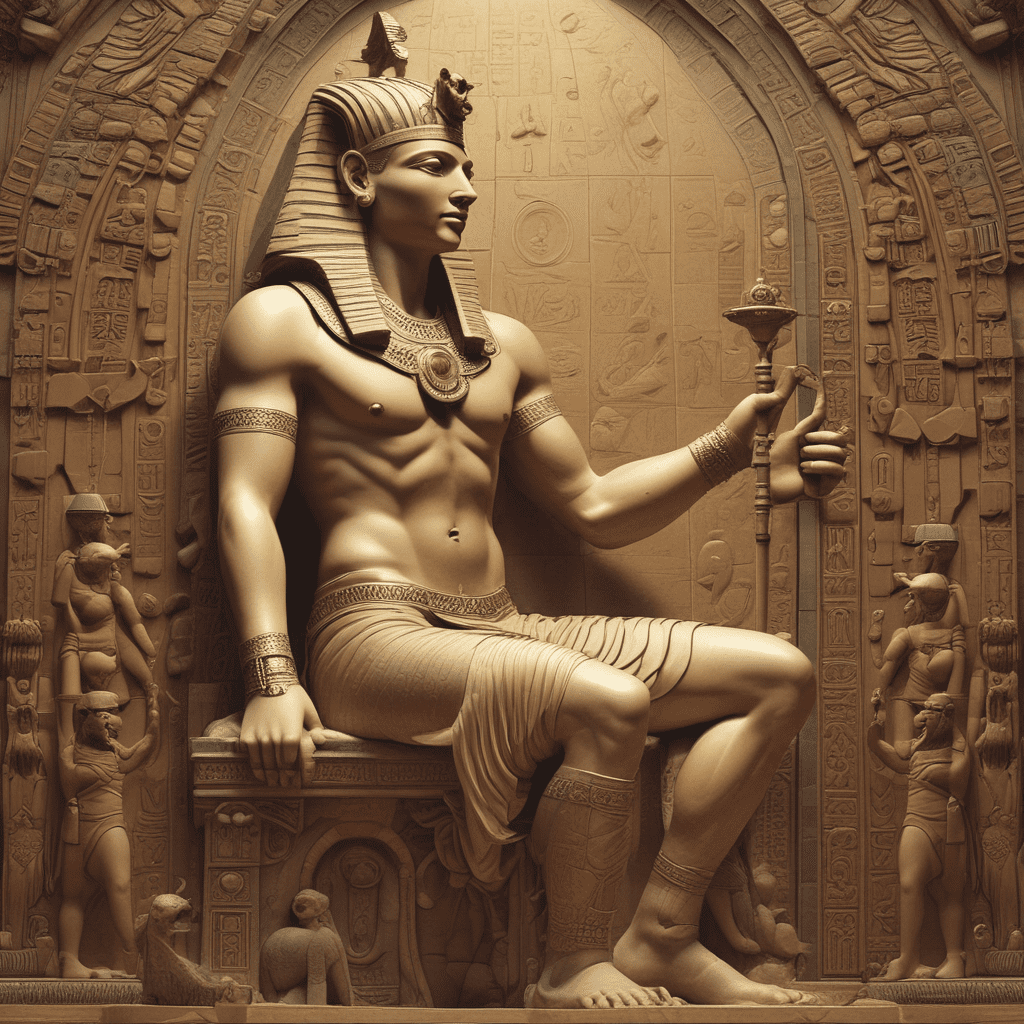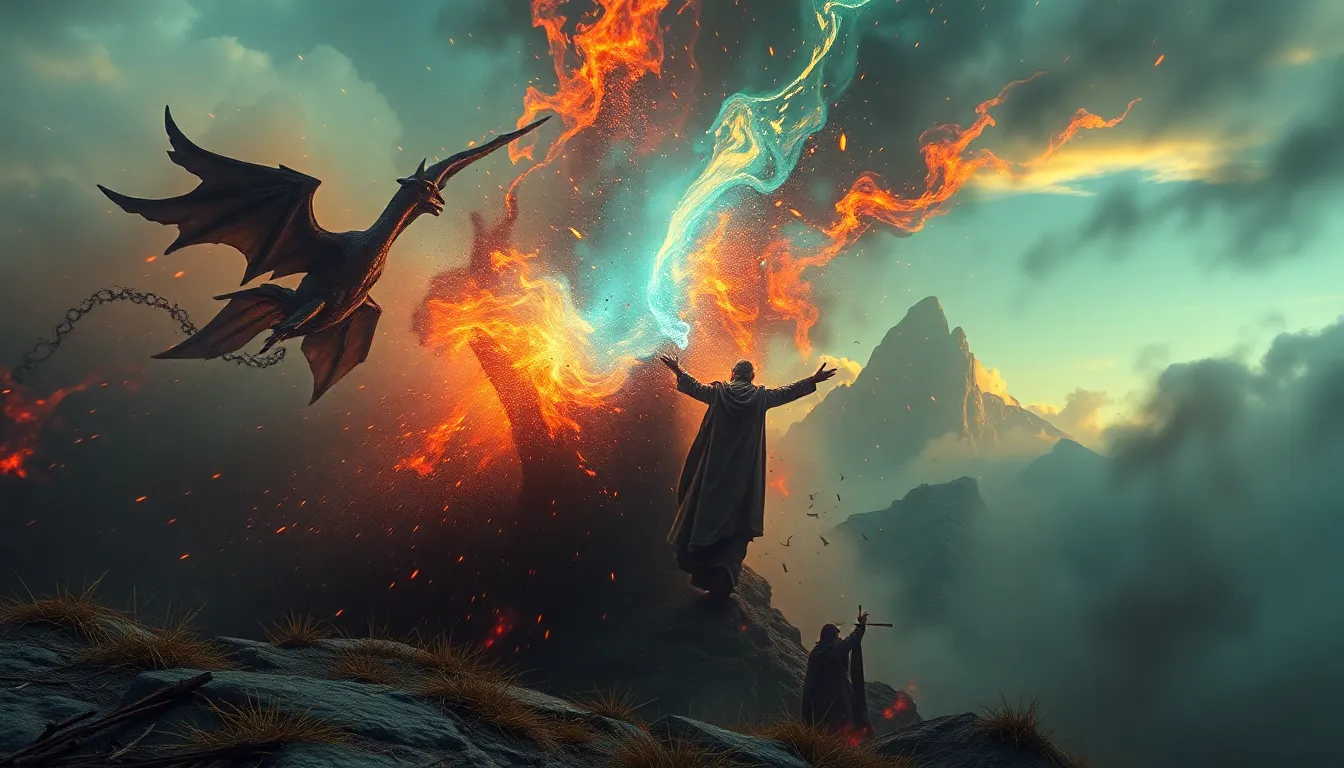The Island of Shadows: Myths of the Underworld in Various Cultures
Introduction to the Concept of the Underworld
The concept of the Underworld is a prevalent theme in mythology across various cultures. Generally defined as a realm where souls reside after death, the Underworld serves as a significant component in understanding the human experience of mortality and the afterlife. Myths surrounding the Underworld often provide insight into cultural values, fears, and hopes regarding death and what lies beyond.
In many narratives, the Underworld acts as a mirror reflecting societal beliefs about life, death, morality, and the consequences of one’s actions. As such, it plays a crucial role in shaping cultural identity and understanding the human condition.
The Island of Shadows: A Central Motif
Islands often symbolize isolation, mystery, and the unknown in mythology. The “Island of Shadows” emerges as a powerful motif, representing the boundary between the living and the dead. Shadows themselves symbolize the ephemeral nature of life and the haunting presence of those who have passed.
In various cultures, the connection between shadows and the afterlife evokes a sense of reverence and fear, suggesting that the memories and spirits of the deceased linger in the world of the living. This motif invites deeper contemplation on the nature of existence and our relationships with those who have crossed over.
Ancient Greek Perspectives: Hades and the River Styx
In Ancient Greek mythology, Hades is the Underworld where souls are judged and assigned to their eternal resting places. Governed by Hades, the god of the dead, this realm is depicted as a gloomy and shadowy existence, contrasting sharply with the vibrancy of the mortal world.
The River Styx, a crucial element of Hades, serves as the boundary between the world of the living and the dead. Souls are ferried across this river by Charon, the boatman, emphasizing the importance of proper burial rites; without them, souls would wander eternally. The implications of crossing the Styx highlight the significance of passage and transition in the journey of the soul.
Egyptian Mythology: The Duat and the Journey of the Soul
In Egyptian mythology, the Duat, or the Underworld, is a complex realm filled with challenges that souls must navigate after death. The journey through the Duat involves various trials, culminating in the weighing of the heart against the feather of Ma’at, the goddess of truth and justice.
Those deemed worthy by Osiris, the god of the afterlife, are granted eternal life, while those who fail the test face dire consequences. The journey through the Duat symbolizes not just the fate of the individual but also the moral and ethical codes of Egyptian society.
Norse Mythology: Hel and the Realm of the Dead
In Norse mythology, Hel is the Underworld where those who did not die a heroic death reside. Governed by the goddess Hel, this realm is often depicted as a cold and dreary place, reflecting the beliefs of the Norse regarding honor and valor in life.
The treatment of the dead in Norse culture is significant; those who perished in battle were believed to enter Valhalla, while others found their place in Hel. This distinction underscores the valorization of bravery and the cultural narrative surrounding death and honor.
Aztec Beliefs: Mictlan and the Path of Souls
Mictlan is the Aztec Underworld, a vast realm where souls embark on a four-year journey after death. This journey is fraught with challenges, including traversing rivers, mountains, and encountering various deities.
- The journey to Mictlan involves:
- Crossing the River of the Dead.
- Navigating the nine layers of Mictlan.
- Rituals performed by the living to aid the deceased.
Rituals surrounding death were crucial in Aztec culture, reflecting the connection between life and the afterlife, and emphasizing the belief that death was not an end, but a continuation of existence in a different form.
Hindu Concepts: Naraka and the Cycle of Rebirth
Naraka, in Hindu mythology, represents a temporary realm where souls undergo purification before rebirth. This concept is integral to the cyclical nature of existence in Hindu beliefs, where life, death, and rebirth are interconnected.
The actions in one’s life determine the circumstances of their next birth, underscoring the moral implications of one’s deeds. Naraka serves as a place of reflection and learning, where souls confront their past actions and prepare for their next incarnation.
Indigenous Perspectives: The Spirit World and Ancestral Lands
Indigenous cultures around the world hold diverse views on the afterlife, often intertwined with the reverence for land and ancestors. The spirit world is seen as a continuation of life, where the deceased remain connected to their communities and the natural world.
Key aspects often include:
- The belief in ancestral spirits guiding the living.
- The importance of rituals to honor the dead.
- The integration of spiritual beliefs with the natural world.
This perspective fosters a deep respect for nature and the interconnectedness of all beings, highlighting the significance of ancestry and heritage in shaping identity.
Modern Interpretations of Underworld Myths
Contemporary literature and media continue to explore themes of the Underworld, often reinterpreting ancient myths to address modern existential questions. From films to novels, the portrayal of the afterlife reflects ongoing fascinations with death and what lies beyond.
Modern interpretations often draw parallels between ancient beliefs and contemporary issues, such as:
- The quest for meaning in life.
- Fear of death and the unknown.
- Exploration of morality and justice.
These modern narratives serve not only to entertain but also to provoke thought about the nature of existence and the legacy we leave behind.
Conclusion: The Universal Human Fascination with the Underworld
The myths of the Underworld across different cultures reveal common themes: the journey of the soul, the moral implications of life choices, and the enduring connection between the living and the dead. The motif of the “Island of Shadows” encapsulates the mystery and uncertainty surrounding death, inviting reflection on our own mortality.
Ultimately, these myths serve as a testament to the universal human fascination with what lies beyond, enriching our understanding of existence and the cultural narratives that shape our perceptions of life and death.




